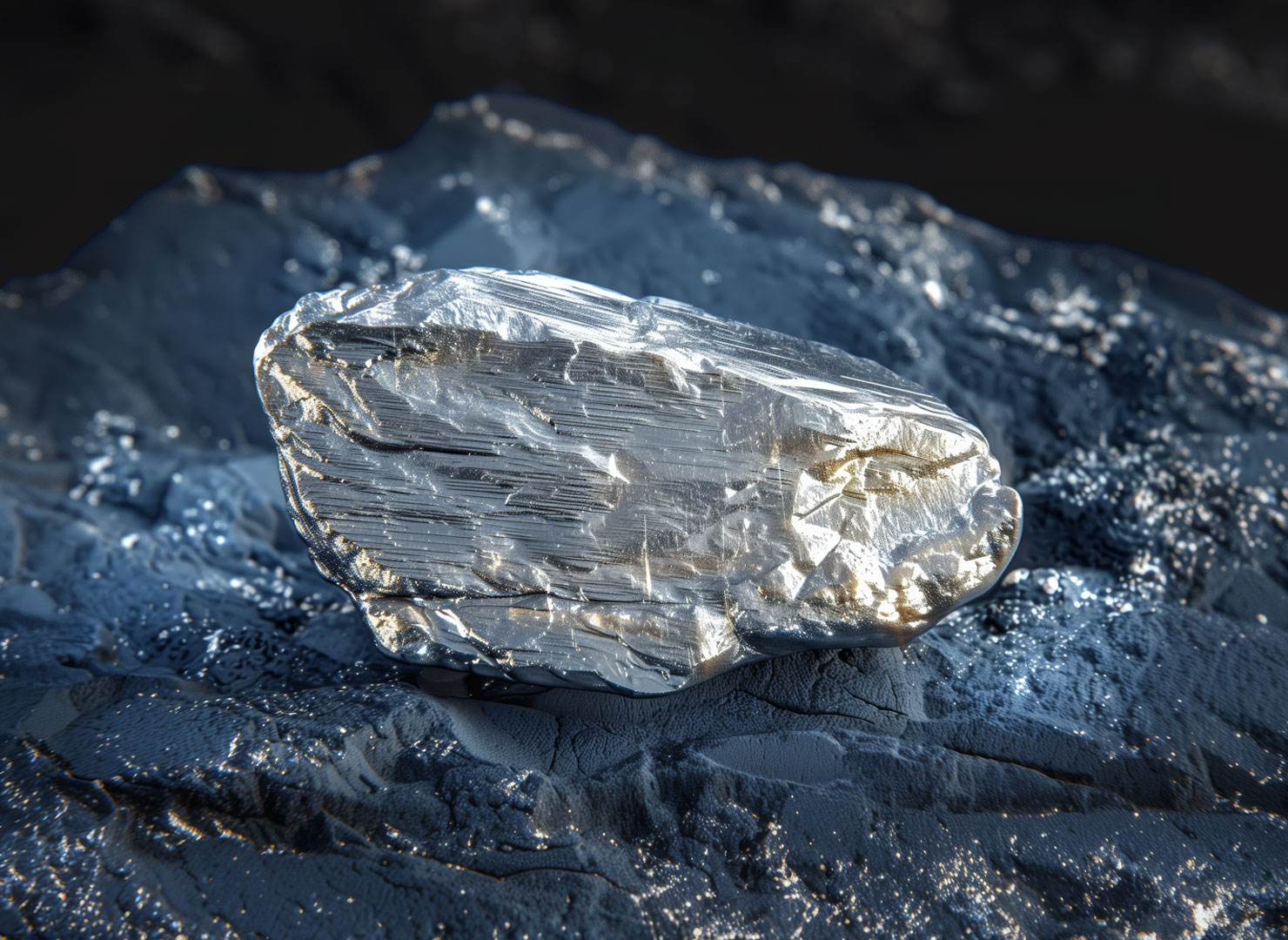The Element Europium
On this page you can find out more about the rare earth element
Name: Europium
Symbol: Eu
Ordinal number: 63
Density: 5,24 g/cm3
Melting point: 822 °C
Boiling temperature: 1.597 °C
Europium is one of the lanthanidesA group of 15 elements with chemically very similar properties. in the periodic table.
Introduction
Europium: Let It Shine and Glow
Europium is a light rare earth element we encounter in everyday life in fluorescent lamps and banknotes. This is because the element is part of the sophisticated security features of every five-euro bill and makes the banknote appear partially red under ultraviolet light.

Discovery at Second Glance
Europium was discovered by the French chemist Eugène-Anatole Demarçay, who in 1896 suspected he had found impurities in samples of the rare earth element samarium, which had only recently been discovered. Using spectroscopic analysis, he was able to detect a previously unknown element. Five years later, he succeeded in isolating europium, which he named after his home continent.
Main areas of application for europium

The Discoverer of Europium
Eugène-Anatole Demarçay was born in 1852 and, throughout his career, worked on describing other chemical phenomena in addition to rare earths and radioactive elements. Demarçay developed a method for separating individual rare earth elements and, in 1901, was the first to isolate europium.
Characteristics
The Most Chemically Reactive Lanthanide
Europium is a silvery-white metal that forms a dark oxide layer when exposed to air. It is the most chemically reactive and softest lanthanide.
Areas of Application
Europium Makes Energy-Saving Lamps Glow
Europium is used as a dopant in the production of phosphors, such as those previously used in CRT televisions. These phosphors are still required today in electronic measuring devices such as oscilloscopesOscilloscopes are electronic measuring devices that can record the progression of electrical voltages over time. and aircraft instruments. The development of color television would have been unthinkable without europium, as its use in the 1960s enabled TVs to display brilliant red hues for the first time. In today’s energy-saving light bulbs, europium helps color light red and blue. The control rods in nuclear power plants also contain europium.

Lighting
Rare earths are used to produce classic fluorescent tubes, modern energy-saving lamps, and LED lights. The raw materials are also used in devices with picture tubes, tablets, and smartphones, where they produce red pixels.
Learn more

Nuclear Power
Nuclear reactors generate energy by splitting atomic nuclei. Nuclear power is currently making a comeback in many countries. This trend could further increase the demand for rare earths, some of which are used in reactor control rods.
Learn more

Pigments
One of the first uses of rare earths was to color glass and enamel. Rare earth pigments produce colors, including yellow, blue, green, pink, violet, and orange.
Learn more

Aviation
Metal alloys containing rare earths are used in wings and fuselages to make aircraft lighter. Lighter aircraft use less fuel and have a greater range. However, rare earths are most commonly used in permanent magnets found in auxiliary motors in aircraft electronics and the motors of landing gear.
Learn more
Deposits
For a long time, the largest producer of europium was the United States, specifically the Mountain Pass mine in California. In the 1990s, Bayan Obo in northern China became the most important mining area. Europium is not found free in nature and must be extracted from other minerals. Of these, bastnäsite and monazite are the most important.
The Bayan Obo deposit in China, Mountain Pass in the US, and Mt. Weld in Australia are currently the most important sources of europium.

Recycling Could Gain in Importance
Due to geopolitical tensions, the high concentration of europium production in just a few countries poses a risk. The US and the European Union classify europium as a critical raw material. Although the element is one of the less common rare earths, it is required for many industrial purposes. Recycling the metal could become more important in the future, and numerous research projects are dedicated to this topic. The current recycling rate of europium is around two percent. By comparison, the figure for iron and steel is up to 90 percent.
Raw Materials Trading Industrial Customers
TRADIUM trades in all industrially relevant rare earth oxides. Choose from a wide range of specifications and take advantage of the option to reserve batches for the long term.
Purchase of Physical Assets for Private Customers
Benefit as a private customer from the exciting market for rare earths as a physical asset. You can find out here what opportunities TRADIUM offers and what tax advantages a purchase of raw materials entails.